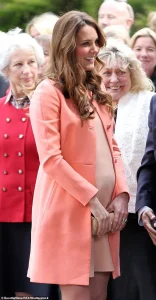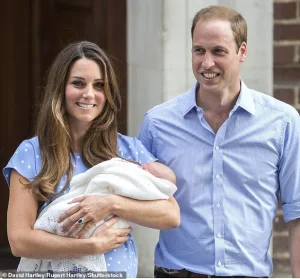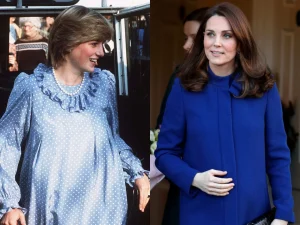Though their pregnancies were separated by more than 30 years, Princess Diana and Princess Catherine (Kate Middleton) shared a deeply personal experience that resonated far beyond the palace walls—severe morning sickness. Known medically as hyperemesis gravidarum, the condition affected both women and revealed how public understanding of maternal health, royal transparency, and institutional support has evolved across generations.
Diana’s First Pregnancy: A Royal Fairy Tale with Hidden Pain
In 1981, 20-year-old Diana Spencer married Prince Charles and soon after became pregnant with Prince William, the future king. While the world celebrated the news, Diana privately struggled. According to Diana: Her True Story by Andrew Morton, the young princess experienced fainting episodes, emotional distress, and intense morning sickness throughout her pregnancy.
The public had little insight into her suffering. In one alarming incident in January 1982, Diana reportedly fell down a staircase while pregnant. Though she sustained only bruises and the baby was unharmed, the palace offered limited comment. Years later, Diana admitted the fall was part of a larger emotional crisis, and biographers have since suggested it reflected the isolation and lack of emotional support she felt as a new royal wife.
At the time, the term hyperemesis gravidarum was rarely used publicly, and few recognized the condition’s seriousness.

Kate Middleton: Bringing Hyperemesis Gravidarum to Light
When Princess Catherine became pregnant with Prince George in 2012, she also faced hyperemesis gravidarum. However, this time, the palace responded with transparency. The pregnancy was announced early—before the 12-week mark—because Kate had been hospitalized at King Edward VII’s Hospital for treatment.
Her symptoms included severe vomiting, dehydration, and weight loss, all common for the condition. Unlike Diana, Kate received timely medical care, and her experience was met with public empathy rather than silence.
Kate went on to suffer the same condition during her pregnancies with Princess Charlotte and Prince Louis, but continued many of her public duties when health allowed. Her openness gave women around the world permission to talk more candidly about their own pregnancy challenges.

Medical Perspective
According to the NHS, hyperemesis gravidarum affects approximately 1–3% of pregnancies. It is far more intense than typical morning sickness and can require hospitalization, IV fluids, and ongoing monitoring.
In contrast to Diana’s time, when such symptoms might have been dismissed, Kate’s visibility helped bring the condition into mainstream awareness. A 2018 article in The Lancet credited her with sparking broader conversations around pregnancy-related illness.

Turning Struggle Into Advocacy
Catherine’s experience shaped her long-term commitment to maternal and child health. In 2021, she launched the Royal Foundation Centre for Early Childhood, a platform dedicated to research and programs supporting children from birth to age five.
Her campaign, “Shaping Us,” aims to educate the public on how the early years impact future mental health, behavior, and life outcomes. In a 2023 open letter, Kate called it her “life’s mission,” emphasizing how maternal health and early child development are closely linked.
By contrast, while Diana’s legacy was more centered on emotional connection and breaking royal norms—like hugging children in public or taking her sons on official tours—Kate has built on that by influencing policy, awareness, and science-based parenting practices.

Royal Support Then and Now
A major difference between their stories lies in the support systems around them.
Princess Diana often had to conform to rigid royal expectations and suffered emotionally in silence. Her struggles with postnatal depression and bulimia were only acknowledged years later.
Meanwhile, Catherine received strong institutional support. Prince William, deeply influenced by his mother’s emotional hardships, adjusted his own schedule to support her through each pregnancy. Kensington Palace provided frequent updates, and public reaction was largely understanding and positive.

Parenting in the Spotlight
Both women prioritized motherhood. Diana broke tradition by actively involving Prince William and Prince Harry in her life, even taking them on state visits. Her approach made the royal family appear more human and relatable.
Kate follows that legacy, choosing to raise her children—George, Charlotte, and Louis—with a focus on privacy, structure, and emotional well-being. The family’s move from Kensington Palace to Adelaide Cottage in Windsor reflects this shift toward a quieter, more grounded family life.
Conclusion: From Silence to Support
The royal pregnancies of Princess Diana and Princess Catherine reveal a powerful story of change: from a time when emotional pain was hidden behind palace walls, to an era where personal struggle can lead to public awareness, better healthcare, and real advocacy.
Diana endured her challenges in silence, paving the way for empathy. Catherine used hers to spark education, reform, and support. Together, their journeys have made a lasting impact on how we understand and care for pregnant women—both inside and outside the palace.
